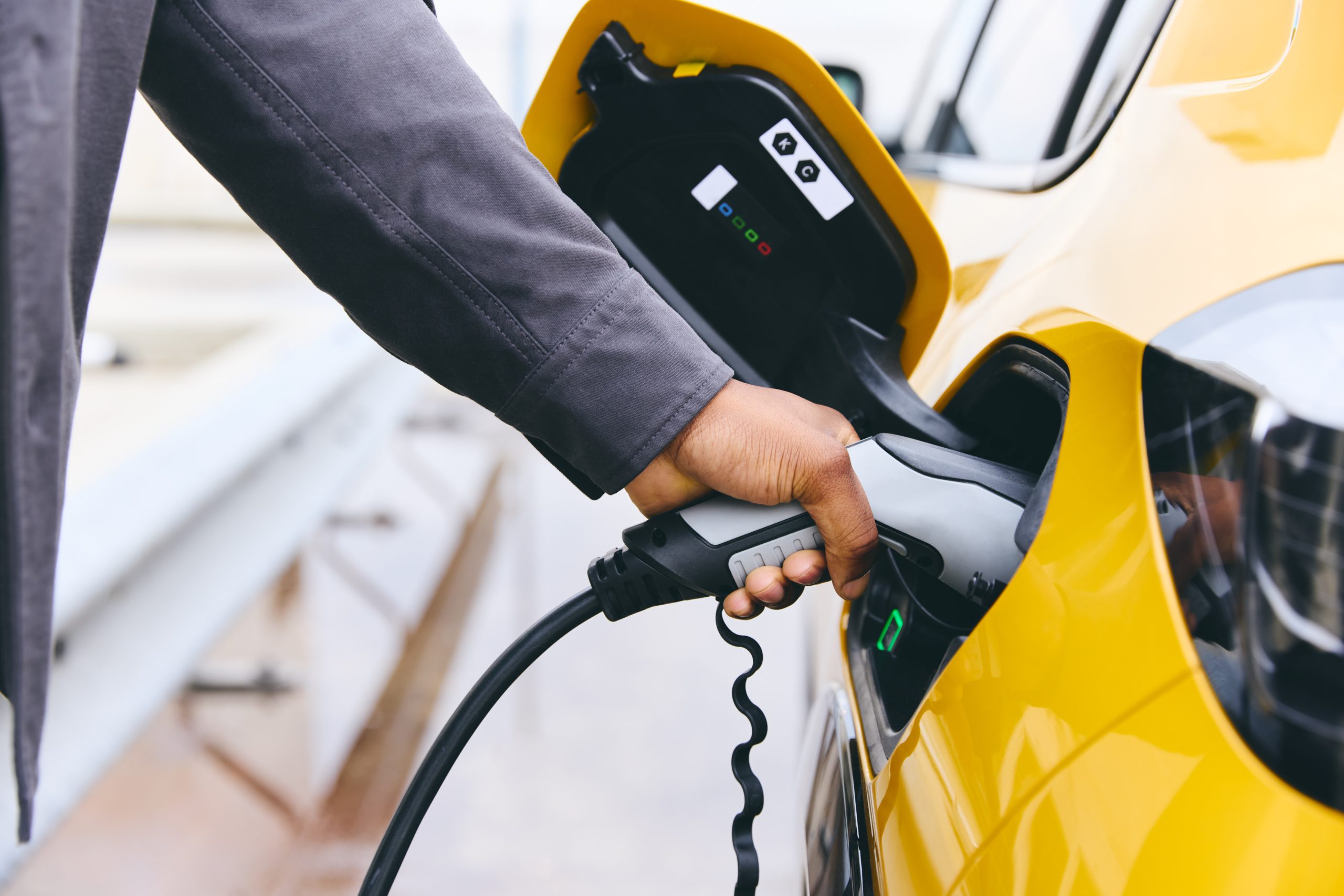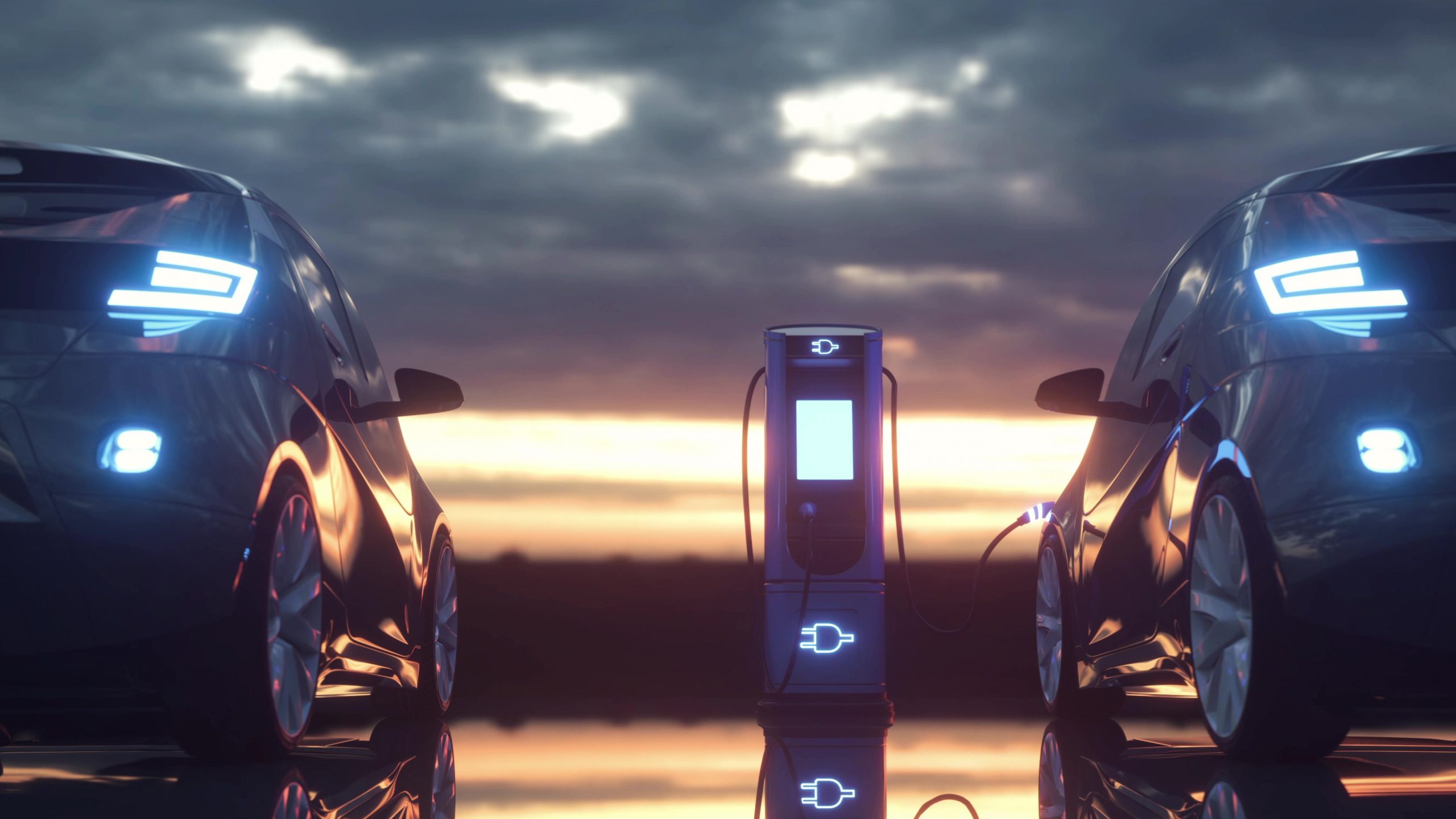INDUSTRY NEWS
Going Electric
How the adoption of EVs will effect funding for road construction.

Since the revenue act of 1932, the US federal government has used taxes placed on gasoline to pay for the development and maintenance of roads in the US. Since then, states have also adopted various taxation forms, which pay for the infrastructure cost of maintaining our highways. As technology and efficiency continue to advance, the use of fossil fuels in our vehicles will decrease as a result. How will we compensate for this loss of funding moving forward, ensuring that our infrastructure is well maintained?
Gas Tax: How it Works
Here’s a basic breakdown of how a gas tax works. The more you use a vehicle to travel the roads, the more gas or diesel you need to buy. The US Federal government and individual states place taxes on said fuel, and you are inherently paying more tax by buying more gas. This tax money then compensates for your increased road usage proportionality. “As a driver, you’re supposed to directly benefit from the gas taxes you pay. Federal gas tax revenue is pumped into a Highway Trust Fund. The HTF funds federal and state infrastructure projects for roads, bridges, and public transportation systems. State gas taxes go into state-managed funds, and each state decides how to use them.”1
As you can see, taxes placed on gas contribute towards the maintenance and improvement of roads that support the vehicles purchasing the fuel in the first place. In short, a gas tax acts as a cycle: the more you drive—the more you pay to support infrastructure. Seems pretty fair, right? This compensation structure also accounts for heavier vehicles and machinery, whose wear and tear on the roadways is incrementally more than a typical passenger vehicle (vehicles like larger semis use more fuel per mile). Altogether, it’s easy to see how fuel tax is a simple yet effective solution for funding the development of our roads, or at least it used to be.
History and Adoption of EVs
Though the rise in popularity and adoption of EVs (electric vehicles) have seen serious momentum gains in the past decade, the battery-powered car was born over 100 years ago. “Here in the US, the first successful electric car made its debut around 1890 thanks to William Morrison, a chemist who lived in Des Moines, Iowa. His six-passenger vehicle capable of a top speed of 14 miles per hour was little more than an electrified wagon, but it helped spark interest in electric vehicles.”2
Today, many factors continue to push the advancement in efficiency and practicality of modern vehicles. The progression of technology and engineering is naturally a driving factor that seems symbiotic with the proliferation of electric cars. One of the most significant technological advancements that have been the backbone of EV market growth has been leaps in battery tech. “With the trend of lithium-ion battery cathodes being improved continuously, these lower-cost batteries could make electric vehicles less expensive than gas-powered vehicles within the next decade. Battery prices alone have decreased 80% since 2010 with hopes of dropping another 45% by 2021 end.”3
With the practicality of production and lower cost of EVs, we’ve seen a significant push in the past two years for many major car manufacturers to add a repertoire of electric vehicles to their lineups. With this wider availability and increased competition among manufacturers, the price of EVs will only continue to drop. Speaking of cost efficiency, have you ever considered comparing how much it costs to fill up your car versus charging a compatible EV? The average cost to fully charge an EV is about $7.20. It’s not hard to see the math when you stack this against the average gas fill-up of a passenger vehicle which is $40. In defense of gas, though, charge time is one of the biggest drawbacks of electric vehicles, and some maintain that this is still a valid justification for the higher gas price—for now.
Technology-driven advancements in efficiency and industry-led gains in availability aren’t the only reasons for the rise in electric vehicles. Did you know that almost a third of the CO2 emissions from manufactured sources in the US are from cars? That constitutes our country’s most significant source of artificial greenhouse gas emissions. Suppose you compare this on a global scale, however. In that case, reports show that the production of electricity and heat through burning coal, natural gas, and oil accounts for the largest global source of CO2 emissions at 25 percent. There are entirely different arguments stating that humanity’s impact on the Earth’s climate is minute at best (hard to believe). “In fact, carbon dioxide, which is blamed for climate warming, has only a volume share of 0.04 percent in the atmosphere. And of this 0.04 percent CO2, 95 percent come from natural sources, such as volcanoes or decomposition processes in nature. The human CO2 content in the air is thus only 0.0016 percent.”4
Whichever position you choose to support regarding manufactured climate change (there are strong arguments that support both sides), the fact remains that concerns for the current state of our climate have undoubtedly driven the adoption of EVs. Many experts are concerned that the human race is approaching a climate tipping point of no return, and the switch to primarily electric vehicles could be a contributing solution.
In fact, one study estimates that “by 2050, the electricity sector could reduce annual greenhouse gas emissions by 1700 million metric tons relative to 2015 levels, a 77% reduction. (by our current trajectory rate of consumers switching to EVs).”5
Regardless of the actual impact of widespread EV vs. fuel-burning vehicle replacements over time, it’s easy to see that these combined factors paint a picture of the eventual extinction of gas vehicles altogether.
What Does it Mean for Our Roads?
No matter how many arguments support or refute the conversion to EVs, this conversion is happening all the same. One research center states, “The latest global passenger (EV) car forecast sees 15% market share in 2025, and 23% in 2030.”6
With this seemingly inevitable shift, it’s essential to look at how we will continue to support the upkeep and expansion of our highway systems.
It’s only natural that as people move towards using electric vehicles and more efficient automobiles, the need for gas will continue to decrease. As the population rises, however, the need for highway maintenance will only persist if not increase. Because of this growing gap between lack of funding and the need for repairs, new policies for supplementing resources for construction must be implemented. There are a few simple concepts that, in theory, would ensure that each person continues to contribute to the maintenance and upkeep of our roadways proportionately to the amount they use them. One of the most basic yet effective propositions to solve this funding issue would be to track miles driven. This plan is fundamentally simpler than even the gas tax, as it directly relates to a vehicle’s road usage. One article suggests that could be done by capturing three particular points of data: fuel miles driven, electrical miles driven, and weight of the vehicle. The separation in tracking gas versus electric miles driven is only due to their separate impacts on the environment, not the overall wear on our highway systems. “A road usage charge policy including these two criteria will fairly assess fees based on which citizens are using the roads the most, and reward those citizens who are also providing clean air benefits by driving PEVs.”7
Heavier vehicles also have more of an impact on road conditions over time when compared to typical passenger vehicles. Driving an average size sedan 100 mi on the road compared to driving an 18-wheel semi carrying cargo 100 miles is a tremendous difference. The 18-wheeler will undoubtedly burden our roadways more because of its added weight and the 14 extra wheels. Though this system would take a great effort to integrate, it could be the most accurate and fair way to spread out the cost of road construction.
Close analytical tracking of road usage is excellent, but this concept could take time to see the light of day. An alternative option to raising funds for road construction would be implementing a higher registration fee for those with electric vehicles. Though this may seem unfair on the surface, this increased registration fee could offset the loss in gas tax revenue. Because the initial purchase price of an electric vehicle is typically higher than its gas-guzzling counterparts, it’s only natural that the amount of sales tax paid is also higher. The fact remains that electric cars don’t use any gas whatsoever. That creates a deficit between funds earned from taxes for road construction. “An EV that costs $35,000 before rebates would pay about $93 less per year in gas taxes than a comparable conventional sedan, but $101 more in average annual excise tax over the vehicle’s lifetime – as well as $908 more in sales tax. If the EV is priced over $60,000, then the EV pays far more in sales tax and excise tax.”8
So if the excise tax on EVs is already proportionately higher than what people pay in the gas tax, the problem is solved, right? Not quite. Proper allocation of gained funds is another critical component in ensuring US citizens see their tax dollars put to good use. In short, it’s important to put an appropriate portion of sales and excise tax towards infrastructure and road construction.
Conclusion
The transition to eclectic vehicles seems to gain momentum each day. In light of this, it is vital to support and adopt new ways to fund the maintenance and construction of the roads we all drive on. After all, what is an advanced new mode of transportation without the infrastructure to support it?


